"Lucky one." Episodes of the falkland war
... The message about the beginning of the attack did not at first summon any special impressions. Plymouth had been in a combat zone for the third week, and the next meeting with the enemy was now perceived as a natural course of events.
The main thing - the baby today is not alone. On the traverse of the Plymouth, the modern Sheffield air defense destroyer goes, and a little further, invisible behind the fog veil, waddles on the waves Yarmouth, another frigate of the advanced British detachment advanced to the southern tip of Falklands.
- Reports the post radar "Type 993", two speed targets from the south, the distance 10, height 150 feet.
Anxious glance from the bridge in the indicated direction - there is nothing, only a whitish veil of spray and oblique streams of rain ...
- It is necessary to check. Contact Sheffield. The weather today is clearly non-flying, a storm of 7 points, horizontal visibility less than 800 yards.
“Sir, Shaffield is not responding.” The targets go straight at us, the flight time is less than 1 minutes.
- Damn it! Are they deaf there? Well, we have to act independently.
... The frigate dramatically tilted to the side, destroying the crests of waves on a high side - the sailors managed to deploy the Plymouth aft in the direction of the flying missiles, minimizing the area of its projection. Drum shot crashed installation "Corvus", brightening the air with fireworks passive interference - the frigate hid from the missiles in the saving cloud of dipole reflectors.
The first Argentine “Exochet” whizzed past and disappeared in the midst of the tatters of a raging ocean. But the second rocket ...
“Sir, Sheffield is on fire!”
Fortune sometimes gives too much, but never enough
The British frigate HMS Plymouth became one of the most efficient and successful ships that took part in the 1982 Falkland War. By the time the hostilities began, the most suitable place for Plymouth was to serve in the “second line” —a quiet position of a “colonial cruiser” somewhere in the West Indies. But life decreed otherwise: the outdated frigate fell fierce sea battles on the edge of the Earth. Not at all hoping for success, the British outfitted this "tub" only because of the extreme scarcity fleet Her Majesties - anyone who was able to hold in their hands was sent to the South Atlantic weapon.
The result was a naval curiosity:
The tiny, outdated frigate demonstrated the wonders of versatility and effective use, crushed targets on land, at sea and in the air, provided for conducting combined-arms and naval operations, repeatedly serving as a fire support device, a “tow truck” and a rescue ship for its less fortunate colleagues. Planted "point" landings, was used to transport special forces.
At the same time, every time the Plymouth attempted to destroy it, it fiercely resisted, and despite all the Argentine efforts to send this miracle to the bottom, the frigate returned from the war without losing a single sailor from his crew. Successfully completed the overhaul, and after six more years he served in various parts of the world as a “British colonial cruiser”.
The chronicle of the combat use of the frigate is worthy of a whole carrier-based formation.
Her Majesty's frigate Plymouth:
a) one of the first to arrive in a combat zone, to remove 12 000 km from the shores of Albion;
b) took part in the destruction of the Argentine submarine "Santa Fe";
c) deftly dodged the Exocset anti-ship missile launched into it;
d) using his 4,5 'inch cannon, “hollowed out” Argentine positions on the Falklands and on South Georgia Island, firing 900 mm caliber shells over 114.
e) claims the destruction of two "Daggerov" Air Force of Argentina (according to British sources, the claimed number of aircraft shot down by a frigate reaches five units);
In the end, the award found its hero - June 8, 1982 "Plymouth" came under a massive blow from the Argentine aviation. Desiring to absolve the sins of the frigate, Argentinean Air Force pilots threw four 500-pound “gifts” into it - BUT alas, not one of the bombs stuck in the Plymouth corps exploded!
Like a conspirator, the frigate patched up wounds and continued to perform tasks in the South Atlantic.
Kismet, as the English say. Rock. Lot. Fortune.
Plymouth was definitely the favorite of fate. Hike in 34 000 miles across the Atlantic, two months in the combat zone in the “frantic fifties”, daily attacks and damage to the war threatening ship wreck — are there many modern fleet combat units able to withstand this? However, even in a situation where much larger and more sophisticated ships were killed around in packs, the old frigate remained calmly calm and continued to perform its tasks, despite its small size, archaic design and the absence of suitable weapons.
Similar stories - decorations of any Navy. The legendary Russian brig "Mercury", the British minesweeper "Bengal" and now, finally, the "Plymouth" ... Desperate courage, professionalism and a drop of luck - sometimes it gives absolutely incredible results.
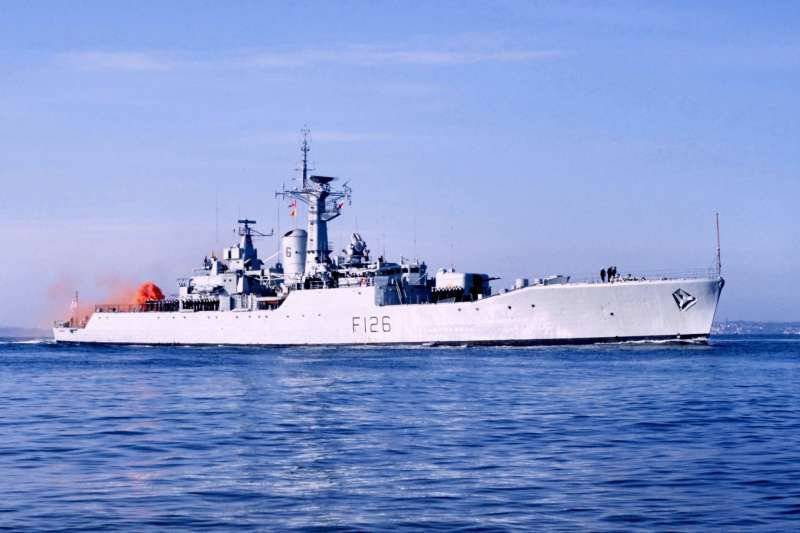
Technical Reference
HMS Plymouth is one of the Rothesay 14 frigates designed to provide escort missions, anti-submarine defense of convoys and warship formations in the coastal zone, in open sea areas and in the vast oceans. In addition to the Royal Navy of Great Britain, frigates of the “Rotssey” type were operated as part of the Navy of the South African Republic and New Zealand.
Full displacement - up to 2800 tons;
Crew - from 152 (draft) to 235 (after upgrading);
Powerplant: 2 boiler, 2 steam turbines with total power 30 000 HP
Full speed - 28 knots;
Fuel Tanks a frigate with a capacity of 400 tons of fuel oil provided a cruising range of 5200 miles at an economic speed of 12 knots;
Armament:
- Universal Mark Mark VI sea naval gun caliber 114 mm;
- 2 anti-submarine bombbo bomb (caliber 400 mm, firing range to 900 m)
- small-caliber anti-aircraft artillery: 40 mm installation "Bofors" or several 20 mm automatic machines "Oerlikon";
- antisubmarine / multi-purpose helicopter "Wasp", aft landing site, hangar.
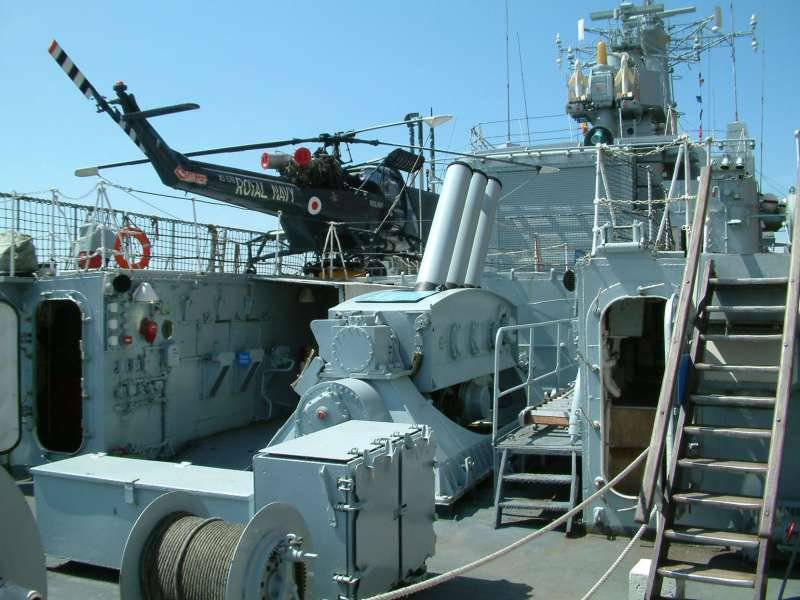
The modernization carried out at the end of 1970-x meant the dismantling of one of the Limbo installations - instead of a frigate, they installed the sea C-CRA and modern fire control systems. Also, for the self-defense of the ship from the newest means of destruction - the Soviet anti-ship missiles, two Nebworth / Corvus 8-barreled installations were installed on the frigate for setting passive interference clouds.
The 12 mm torpedoes planned for the 533 project were never installed in reality.
The Plymouth itself was laid out in the 1958 year, launched in the 1959 and accepted into the UKRMS of the UK at the beginning of the 1961 year.
Even a quick glance at the characteristics of the Plymouth is enough to recognize that by the beginning of the 1980's, the ship was completely outdated and was useless. Particularly embarrassing is the air defense system, which consisted of the “Sea Cat” air defense missile system, a paired universal gun and a pair of Oerlikon from the Second World War.
At the same time, as it should be, the sector of firing 114 mm Mark VI guns was limited to bow angles. A "formidable" anti-aircraft missile system "C Cat" was inferior in its capabilities even Stinger MANPADS - at Stinger at least the speed of the rocket 2 times the speed of sound, while the British miracle "C Cat" fired subsonic (! ) Zur.
Considering all the above, the Plymouth frigate was completely defenseless in the attack from the air.
In its "main specialty" - the provision of anti-submarine defense, the "Plymouth" looked no less weak - there was no need to consider the three-gun Limbo as an effective anti-submarine weapon at the beginning of the 1980-s. There are no rocket-torpedoes, there are also no self-guided anti-submarine torpedoes in his arsenal. The only intelligible tool is the light “Wasp” helicopter, however, you can expect from this “dragonfly” from max. Tonnage 2,5 tons of any exploits also did not have to.
Anti-ship cruise missiles? Automatic radar-guided anti-aircraft guns? Any serious constructive protection? None of this on the "Plymouth" was not. British sailors seriously risked their lives, going on this "bucket" in the thick of battles.
Combat use statistics
Having gone on a march as part of an advanced unit, the Plymouth outnumbered the main forces of Task Force 317 for at least ten days, having arrived in the combat area as early as the twentieth of April 1982. The frigate wasted no time and, together with the icebreaker and the destroyer Antrim, he immediately joined the work on “cleansing” and returning to the British control of the island of South Georgia (a tiny piece of land in the open ocean, east of the Falkland archipelago).
There were no hot fighting in that region - each side had a modest amount of forces, because the case was limited to the transfer of special forces groups by helicopters and a short bombardment of the South coast. Georgia, after which the Argentine garrison of one hundred and fifty people threw a white flag.
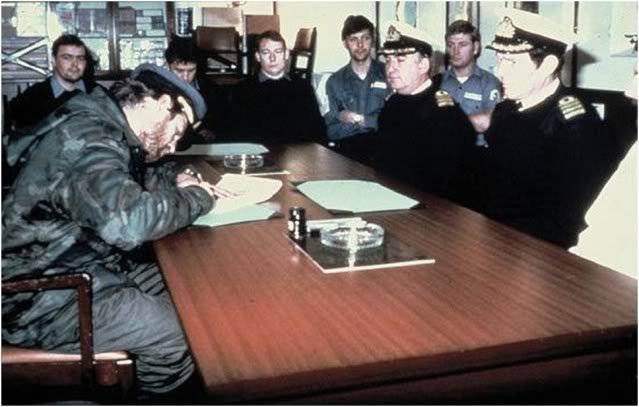
In the course of a short skirmish at South. Georges, the British managed to capture (destroy) the only Argentine ship in that square - the submarine "Santa Fe", used to deliver reinforcements. The Plymouth took part in the attack - a helicopter sent to the mission shot the Santa Fe with the small AS-12 ASMs, permanently damaging the boat and forcing it to surrender. However, the boat was old - the “Balao” of American construction, from the time of the Second World War, moreover, it was in a terrible technical condition and lost the ability to dive. However, the Argentine Navy suffered its first loss. The warm-up for the Plymouth was a success.
Having resolved the issue with South Georgia, the frigate moved 500 miles to the west, to the Falkland Islands - where the real fighting began. The new combat maneuvering area was located in the area of Argentine aviation, and every British ship every minute risked being hit by an air strike. So it happened - the 4 of May 1982 of the year, the British radar patrol met the Argentine “wunderwaffe” - supersonic bomber carriers “Super Etandar”, armed with the AM39 Exocet anti-ship missiles.
Little Plymouth detected the threat in time and safely disappeared under the umbrella of the dipole reflectors. Worked the professionalism of the British team + a drop of luck. Unlike the destroyer Air Defense "Sheffield", whose commander hoped for non-flying weather and turned off the search radar (working radar interfered with satellite communication channels). As a result, the Sheffield burned down from an unexploded rocket, the crew lost the 20 people killed and the destroyer’s name is permanently on the list of naval curiosities.
As for the miraculously saved Plymouth, the only one whose actions in the prevailing situation turned out to be true ... there was not a word about him in the press, the ship did not receive combat damage, the crew was intact ... there was no sensation here.
Fortunately for the Plymouth crew, the frigate was no longer able to meet the AM39 Exocet. The enemy was only glimpsed - the dark shadows of Argentine planes, rushing over the water itself.
... "Ardent", "Entiloup", "Coventry", "Broadsward", "Entrym", "Glasgow", "Sir Galahed", "Sir Lancelot", "Atlanatik Conveyor" ... the "cardboard" ships of the English one by one turned into burning ruins, by the end of May, Her Majesty’s squadron had thinned by a third.
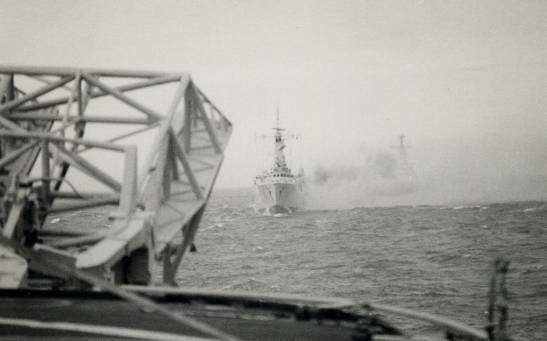
Amazingly, the small Plymouth was still safe and sound. The anti-aircraft gunners regularly repelled attacks by Argentine aviation, alas, all Argentine planes flew past, as did the C Cat anti-aircraft missiles ... Post-war research showed that none of the Argentine Air Force’s losses could be reliably attributed to Plymouth - it looks like all missiles launched went into the "milk" or their combat units worked at a too great distance to cause fatal damage to the enemy. However, what else to expect from the "Sea Cat" air defense system with subsonic missiles and manual guidance of missiles at the target?
May Plymouth 21 evacuated the frigate Her Majesty's Argonaut - this unlucky ship received two unexploded bombs from the sky. With exploded boilers, broken radar antenna and fire in an anti-aircraft ammunition cellar, Argonaut completely lost its combat capability and owes its salvation only in time to arrive in Plymouth. Sailors from the Plymouth helped to bring down the flames and literally pulled the damaged Argonaut out of enemy attacks.
Two weeks later, Plymouth itself will suffer the same fate - four unexploded bombs! Hmm ... it looks like fate has a good sense of humor.
Despite the failure of the fuses, the bombs caused severe damage, and a detonation of depth charges occurred at the stern and a serious fire broke out. However, the Plymouth crew again managed to cope with the troubles without losing a single person.
14 July 1982, the Plymouth returned to the metropolis under its own power, leaving 34 000 nautical miles as a stern.
The old frigate was finally written off only in 1988. Plymouth stood 16 for years as an exhibit on the River Clyde (Glasgow), until the next reduction in the military budget put a question mark on its future fate. In 2012, information about the sale of the Plymouth was scrapped, an Argentine name flashed among potential buyers ... The fate of the legendary ship could have an enchanting ending - the Argentines, having spent so much effort to destroy the elusive frigate, finally, could complete the job, dismantling the rusty Plymouth on the nails. However, according to the latest data, Turkey will become the buyer of the “Falkland veteran”.
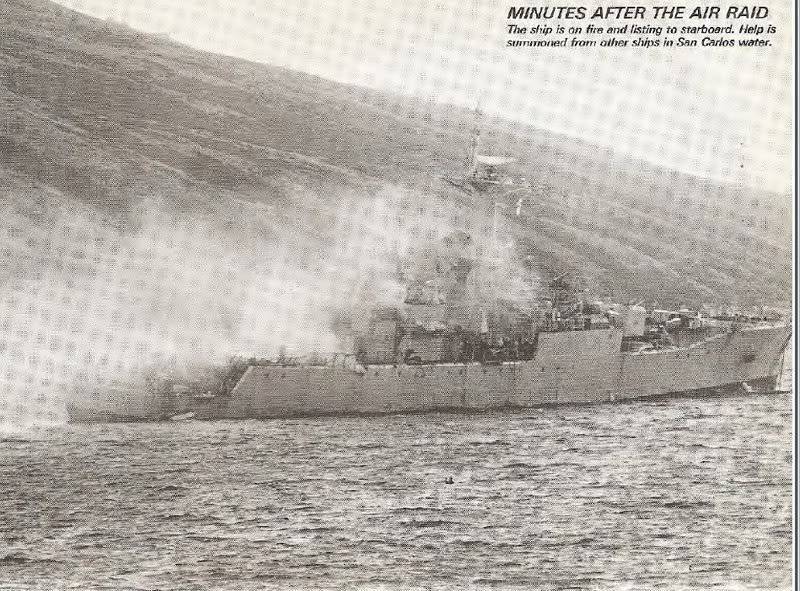
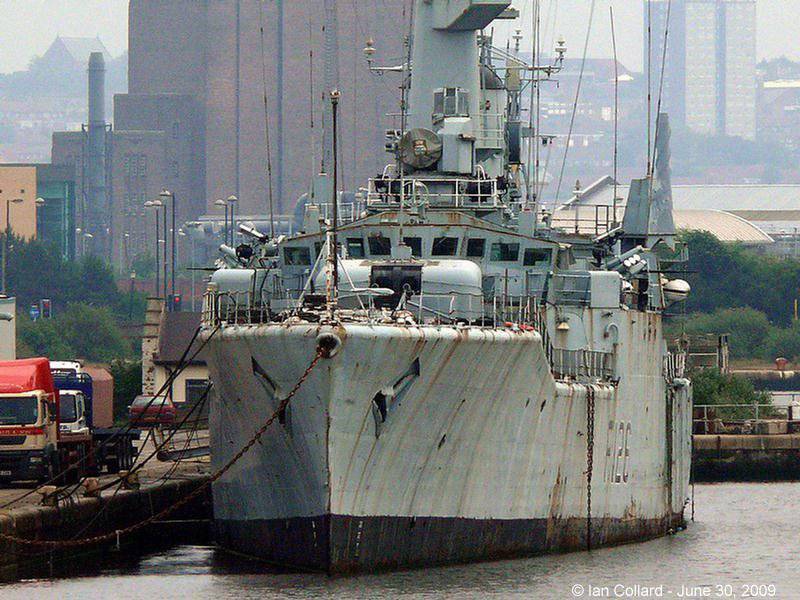
http://www.hmsplymouth.co.uk/
http://www.wikipedia.org/
http://www.hmsplymouthtrust.co.uk/
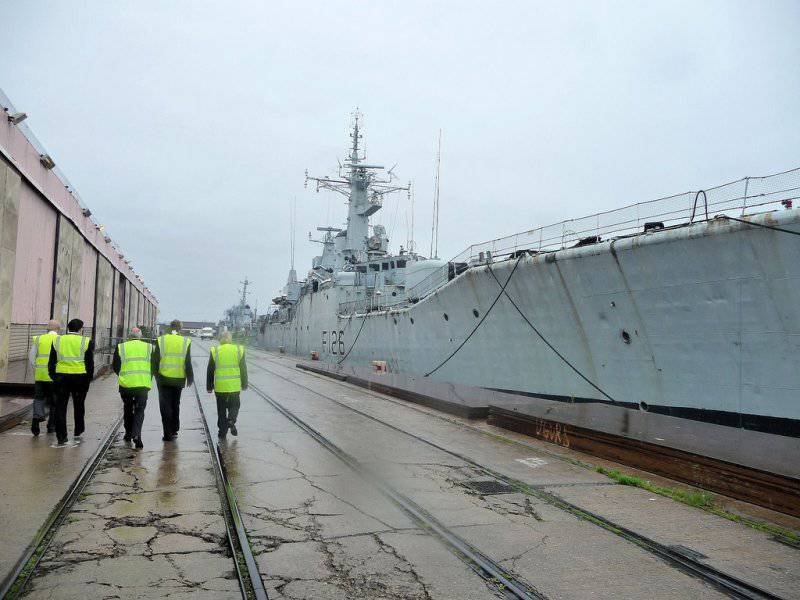
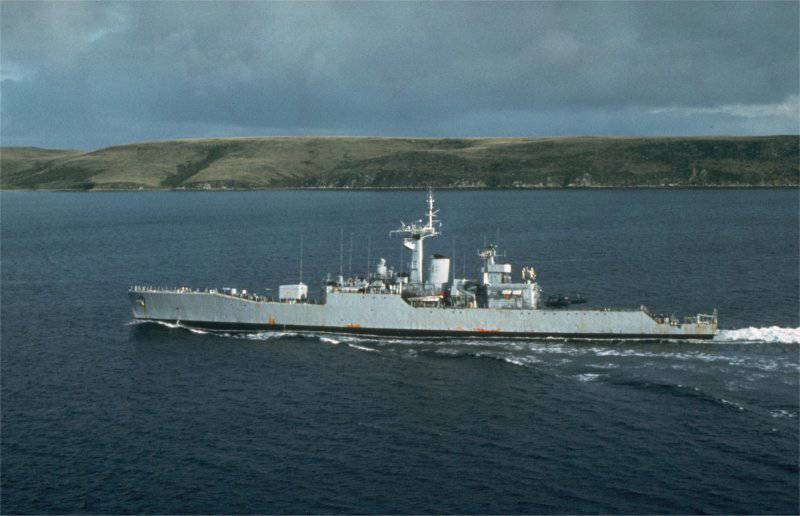
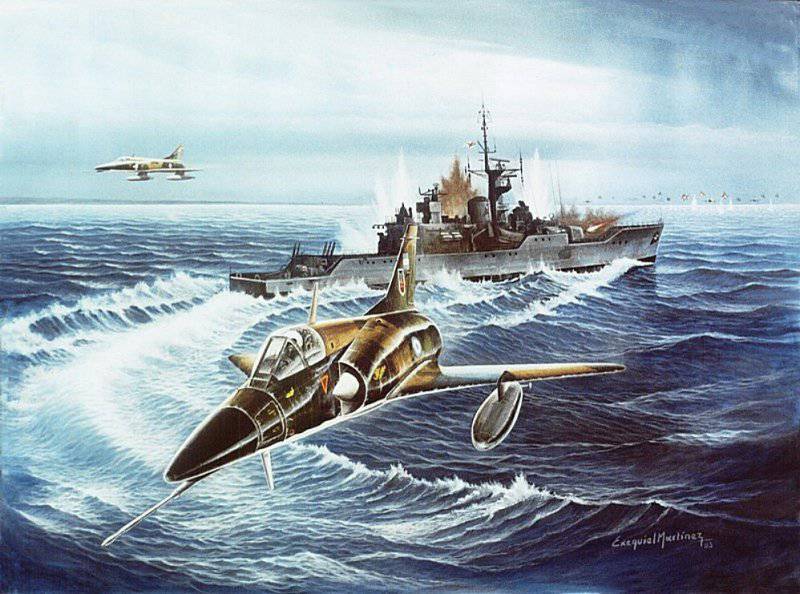
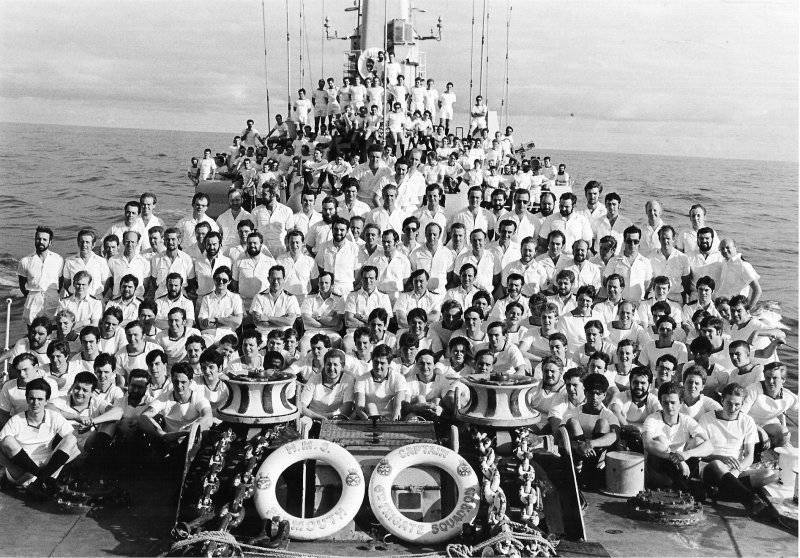
Information